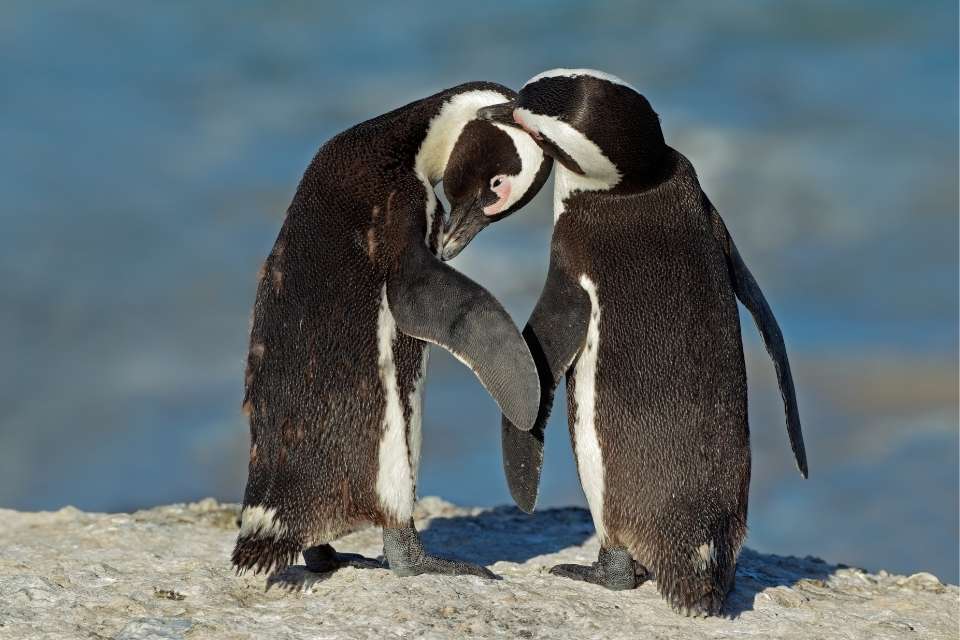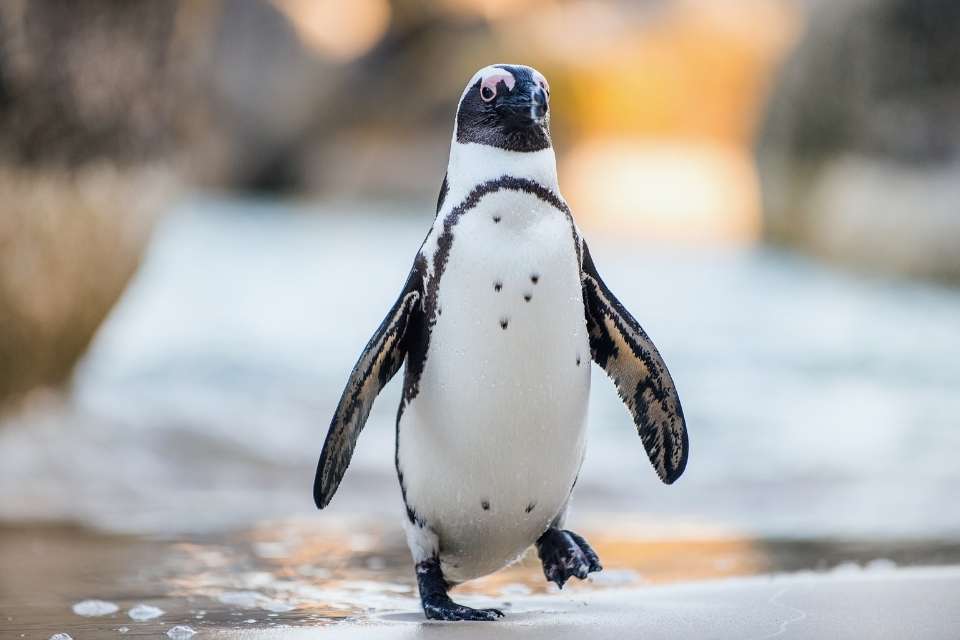When it comes to penguins, we may think of their adorable waddling and their remarkable ability to survive in extreme cold. But have you ever wondered if penguins can have twins?
Yes, penguins can have twins, although it is rare. Some penguin species, such as emperor and king penguins, typically raise only one chick, but other species may lay multiple eggs, increasing the chance of having twins.
In this article, we will explore penguin reproduction and their intriguing breeding habits to uncover the answer to this question.
Key Takeaways:
- Penguins, being birds that lay eggs, can indeed have twins.
- While it is rare for penguins to have twins, it is possible in certain circumstances.
- Species like emperor and king penguins typically lay one egg and raise one chick, but other species may lay two or three eggs, increasing the chance of having twins.
- Penguin twins have been observed in various locations, including aquariums in China and zoos in Canada.
Penguin Breeding Habits
Penguins have fascinating breeding habits that contribute to their unique reproductive cycle. During the breeding season, penguins come together to find partners and mate.
This bonding process is crucial for establishing families and ensuring the survival of their species.
Once mating occurs, the result is a clutch of eggs. Penguins have various nesting preferences, and their eggs can be laid in nests, on the ground, or even on the feet of the parents themselves.
This diverse range of egg-laying behaviors reflects the adaptability and resourcefulness of these incredible birds.
While most penguin species lay two eggs, there are exceptions. Emperor and king penguins, for example, lay only one egg. These eggs are typically laid a few days apart, but they are considered one “birth.” This means that even if two eggs are laid together, penguins usually have only one chick survive to maturity.
“Penguins exhibit remarkable resilience and adaptability in their breeding habits. From the placement of their eggs to the timing of their hatching, each species has unique strategies for ensuring the successful development and growth of their offspring.”
Penguin eggs are a testament to their remarkable survival tactics. In some cases, penguins may have twins if two eggs are laid together. However, the competition for limited resources and the demanding conditions of their environment often result in only one chick surviving.
Understanding penguin breeding habits,including egg laying and chick development, offers valuable insights into their intricate family dynamics and survival strategies.
These habits highlight the ingenuity and resilience of penguins as they navigate the challenges of raising their young in harsh and unpredictable Antarctic conditions.
Parental Care in Penguins
When it comes to caring for their offspring, both male and female penguins play active roles. Penguin parental care is a shared responsibility, with parents taking turns incubating the eggs and providing for the chicks.
While each penguin species has its unique behaviors, some species, such as Chinstrap and Yellow-Eyed penguins, stand out for their remarkable family dynamics.
These penguins care for both of their newborn chicks simultaneously, displaying exceptional multitasking skills.
Male and female penguins work together to raise their chicks, showcasing the importance of teamwork and cooperation in penguin family dynamics.
However, in most penguin species, only one chick survives to maturity. This singular chick is often referred to as the “keeper” and is given the utmost attention and care by its parents.
The second egg, which is typically laid a few days after the first, acts as a backup plan in case the “keeper” egg is lost or damaged.
Penguins exhibit different family dynamics and behaviors when it comes to raising their offspring. The intricate balance between parental roles and the survival of the fittest shapes their family structures.
Understanding penguin parental care provides insights into the unique ways these fascinating birds care for their young.
Species Variations in Penguin Reproduction
Different species of penguins showcase fascinating variations in their reproductive behaviors. Let’s explore some intriguing examples:
Rockhoppers and Macaroni Penguins: The “Dummy” Egg Strategy
Rockhopper and Macaroni penguins employ a unique strategy called the “dummy” egg technique.
These resourceful species lay a “dummy” egg as a fail-safe measure, while the second egg acts as the “keeper.” In case the first egg is lost or damaged, the “dummy” egg serves as a backup to ensure successful reproduction.
Magellanic, Galapagos, and Humboldt Penguins: Laying Multiple Eggs
On the other hand, species like Magellanic, Galapagos, and Humboldt penguins are known for laying multiple eggs during the breeding season. In most cases, the first egg laid is larger and hatches first, giving it a competitive advantage.
As a result, usually, only one chick survives to maturity, despite the initial possibility of twins.
“Penguins exhibit remarkable adaptability in their reproductive strategies, enabling them to thrive in diverse environments.” – Penguin Research Society
These variations in reproductive behaviors among different penguin species demonstrate their ability to adapt to unique environmental conditions, ensuring the successful continuation of their populations.
Penguin Egg Laying Patterns
Penguin egg laying patterns vary among different species. While most penguins lay two eggs, Emperor and King penguins lay only one egg. The timing of egg laying is influenced by factors like food availability in the ocean.
Penguins lay their eggs in nests, on the ground, or even on their feet.
In some cases, the first egg laid may be a dummy or larger than the second egg, resulting in variations in chick development and survival rates.
Penguin Chick Development and Parental Roles
After hatching, penguin chicks depend on their parents for nourishment and security. The duration of time that chicks remain with their parents varies across species.
For some species, the chicks stay with their parents for about seven to nine weeks, while king penguin chicks may stay with their parents for as long as 13 months.
Male penguins play an integral role in the incubation of eggs and the care of the chicks. They take turns with the females in keeping the eggs warm, ensuring their successful development. Once the chicks hatch, both parents participate in feeding and protecting them.
“Male penguins play a crucial role in taking care of the chicks, just like the females. It’s a team effort that showcases the strong bond and cooperation within penguin families.” – Penguin Expert
Penguins have remarkable ways of recognizing and tending to their own offspring. They use distinct calls, smells, and appearance to differentiate their chicks from others, ensuring that they provide the right attention and care to their own offspring.
Conclusion
Penguins, like many other bird species, have the potential to have twins, although it is a rare occurrence.
While emperor and king penguins typically raise only one chick, there are other penguin species that may lay multiple eggs, increasing the likelihood of having twins. Understanding penguin reproduction and breeding habits provides us with valuable insights into their fascinating lives.
From their unique egg-laying patterns to their diverse parental care behaviors, penguins exhibit a range of reproductive strategies. Some species, like Rockhoppers and Macaroni penguins, use a “dummy” egg as a backup, while others, such as Magellanic, Galapagos, and Humboldt penguins, may lay multiple eggs but usually raise only one chick to maturity.
These variations contribute to the survival and success of penguin populations in different environments.
Furthermore, the role of both male and female penguins in incubating the eggs and caring for the chicks is crucial to their reproductive success.
While some species, like Chinstrap and Yellow-Eyed penguins, care for both their newborn chicks simultaneously, in most cases, only one chick is raised to maturity.
Penguins have evolved unique ways to recognize and care for their own offspring, indicating the importance of ensuring the survival of their genetic lineage.
By delving into the breeding habits and family dynamics of penguins, we gain a deeper appreciation for these incredible birds and the intricacies of their reproductive lives.
As we continue to study and protect penguin populations, it is essential to understand and respect their unique reproductive behaviors, contributing to the sustainability and conservation of these beloved creatures.
FAQ
Can penguins have twins?
Yes, penguins can have twins, although it is rare. Some penguin species, such as emperor and king penguins, typically raise only one chick, but other species may lay multiple eggs, increasing the chance of having twins.
What are the breeding habits of penguins?
Penguins come together during the breeding season to find partners and mate. They lay eggs in nests, on the ground, or even on their feet. Most penguin species lay two eggs, although there are exceptions like emperor and king penguins, which lay only one egg.
How do penguins care for their offspring?
Both male and female penguins share the responsibility of incubating the eggs and caring for the chicks.
Some penguin species care for both of their newborn chicks simultaneously, while others raise only one chick to maturity. Penguins use various cues like calls, smells, and appearance to recognize and care for their own chicks.
Do different penguin species exhibit variations in reproduction?
Yes, different penguin species exhibit variations in their reproductive behaviors. Some species lay a “dummy” egg as a fail-safe, while others lay multiple eggs with variations in chick development and survival rates. Penguins have unique family dynamics and behaviors when it comes to raising their offspring.
What are the egg laying patterns of penguins?
Penguin egg laying patterns vary among species. Most penguins lay two eggs, but some species like emperor and king penguins lay only one egg. The timing of egg laying is influenced by factors like food availability. Penguins can lay their eggs in nests, on the ground, or even on their own feet.
How do penguin chicks develop, and what are their parental roles?
After hatching, penguin chicks rely on their parents for food and protection. The length of time that chicks stay with their parents varies among species.
Male penguins play a crucial role in incubating the eggs and caring for the chicks. Penguins have fascinating chick development and unique parental roles.


